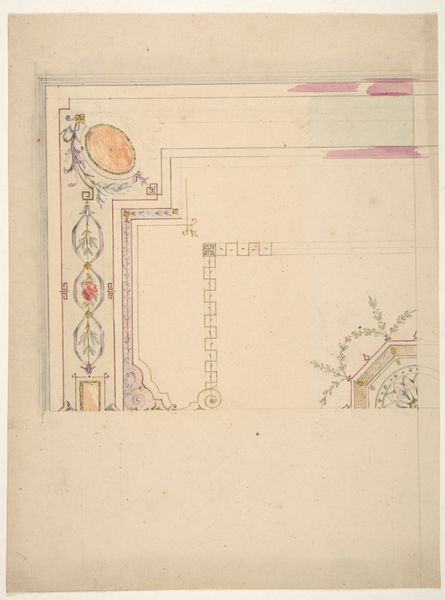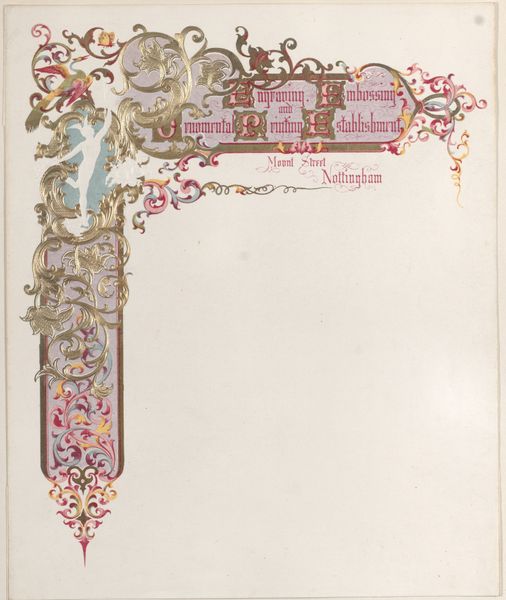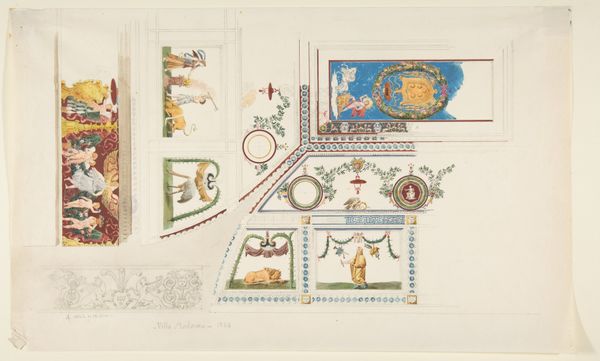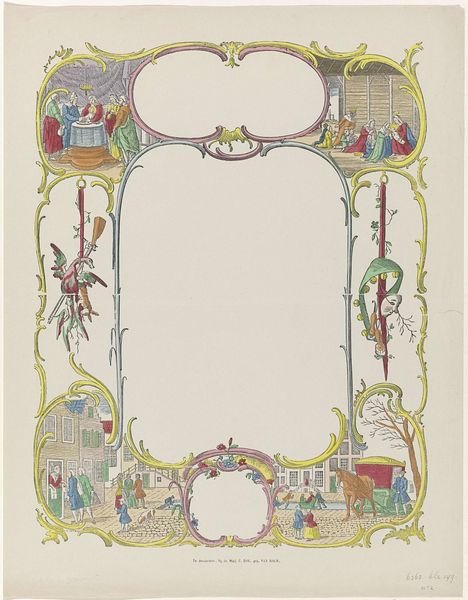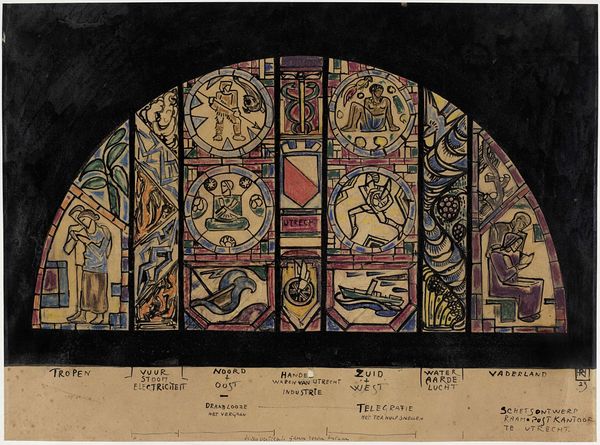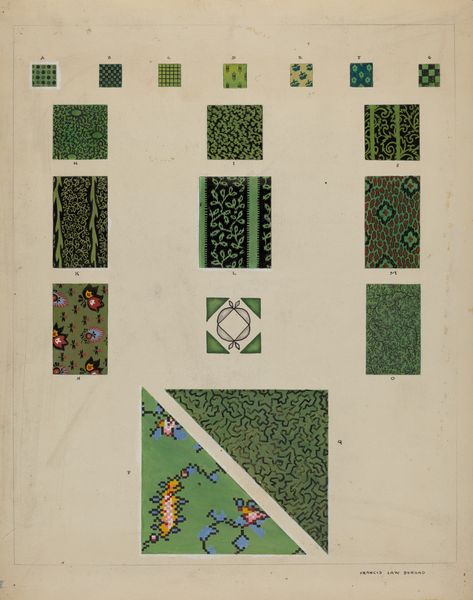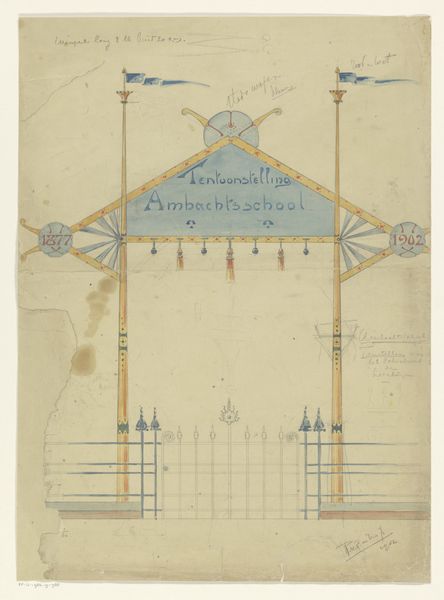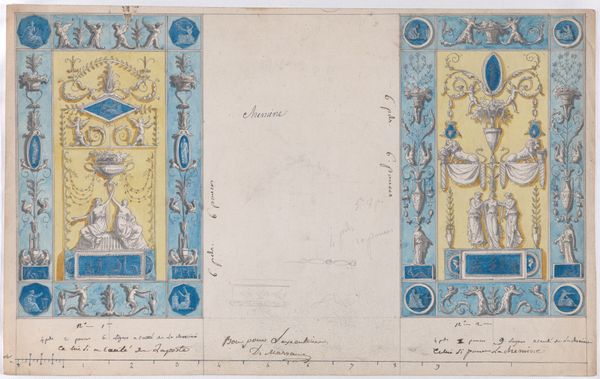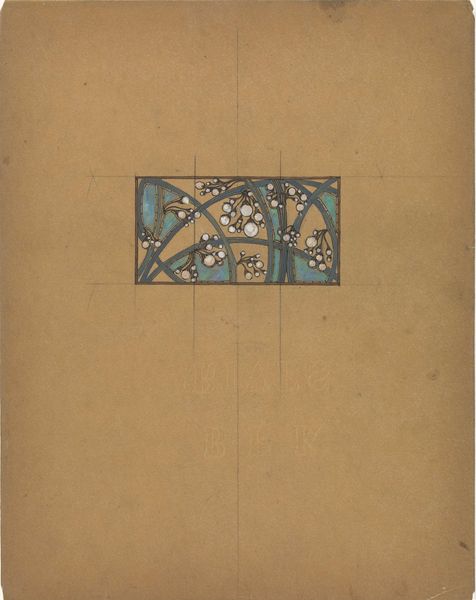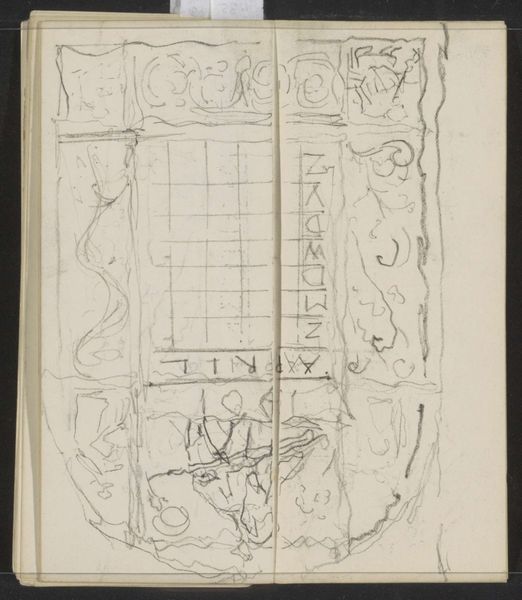
Kopi fra mosaikkerne i S. Vitale, Ravenna, samt notater 1902 - 1905
0:00
0:00
drawing, paper, watercolor
#
drawing
#
byzantine-art
#
medieval
#
water colours
#
paper
#
watercolor
#
coloured pencil
Dimensions: 356 mm (height) x 242 mm (width) (bladmaal)
Curator: Immediately striking. There’s something undeniably captivating in this preliminary watercolor study rendered on paper by Niels Larsen Stevns. The work, titled “Kopi fra mosaikkerne i S. Vitale, Ravenna, samt notater," created sometime between 1902 and 1905, presents an early 20th-century artist grappling with the echoes of Byzantine art. Editor: The term 'echoes' is rather evocative, as the high-keyed watercolour tones belie the weight of the original Byzantine mosaics. What do you think Stevns focuses on compositionally? Curator: Precisely, the use of watercolor as opposed to the original mosaic conveys a fragility not present in the Ravenna church. Stevns' interest lies in appropriating this visual language. By visiting these early Christian sites, Scandinavian artists often felt validated within a Western cultural heritage dating back to ancient Byzantium, rather than rooted only in northern territories. This artistic lineage allowed for inclusion in the history of Christianity across temporal, spatial, and stylistic variances. Editor: But the flattened perspective is something that Stevns clearly admires and maintains here. We see that particularly in the register dedicated to the Binding of Isaac. By focusing on the essential iconic forms and not pursuing mimetic representation, it amplifies its spirituality. Curator: Right. It points to a deliberate embrace of certain stylistic aspects while overlooking others. The composition almost becomes a type of manifesto. It signals his belonging and claims ownership of a specific genealogy by copying early Christian mosaic programs. Editor: So, through the careful distillation of color and form, we see Stevns emphasizing the emotional and symbolic weight over any literal reproduction. Curator: Exactly, he captures that Byzantine essence while using the watercolour medium, making it accessible to new, perhaps more modern, audiences. In a way, it’s a method to democratize and familiarize these historically charged images within his cultural context. Editor: Thank you. His interest really transmits a specific vision into our contemporary moment, doesn't it? The notes add yet another fascinating layer into the artist's decision-making as well. Curator: Yes, looking at Stevns’ image, we see not only a beautiful rendition of mosaics, but a political and aesthetic manifesto in his artistic choices.
Comments
No comments
Be the first to comment and join the conversation on the ultimate creative platform.
